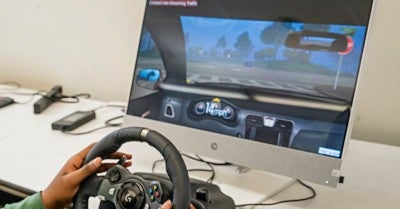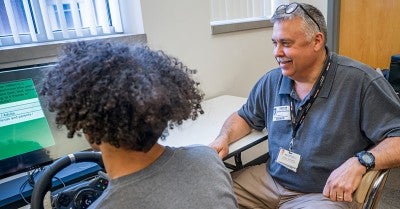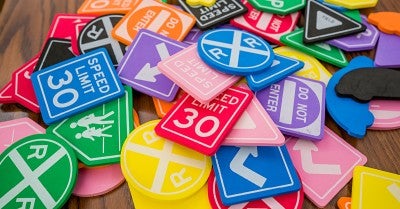LVHN’s driving simulators
At Lehigh Valley Health Network (LVHN), we’re constantly working to educate drivers on the dangers of distracted driving and driving impaired. Each year, we visit dozens of schools with our distracted/impaired driving simulators.
We’ve reached more than 71,000 students since the program began 12 years ago.
“I’m there to try to prevent them from becoming a trauma patient,” says Bill McQuilken, a trauma prevention coordinator with LVHN, of the program he helped develop. “I tell them there are consequences to driving distracted or impaired.”
Pennsylvania state police and a local county judge, as well as LVHN’s MedEvac helicopter, are featured in LVHN’s simulator videos to make them more relatable and realistic. “They [students] are very surprised at what can happen,” McQuilken says. “It can get very emotional for them.”
McQuilken doesn’t sugarcoat the dangers of distracted or impaired driving. He warns of possible injuries and deaths, lawsuits and jail time. “The message is simple. Distracted or impaired driving can kill you or others,” McQuilken says. “We’re working hard to prevent this unnecessary suffering.”
The program isn’t just simulators. McQuilken joins with community partners, including the Center for Humanistic Change, Northampton County Highway Safety Program and the Highway Safety Network, to deliver a comprehensive program and message.





